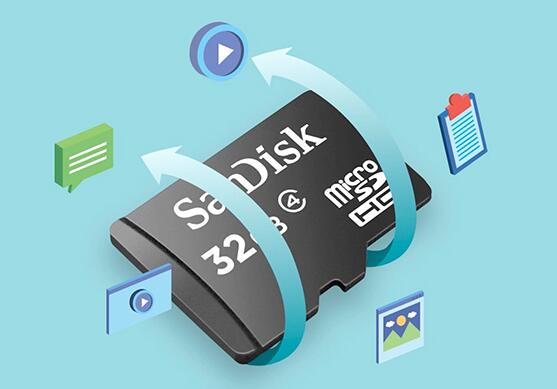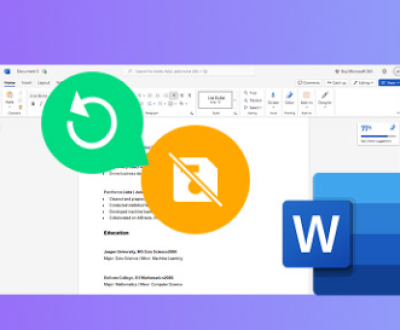The SanDisk File Recovery Utility is a free software tool designed to help users recover deleted or lost files from SanDisk flash drives, memory cards, and solid-state drives (SSDs). This utility uses sophisticated algorithms to scan storage devices and recover files that may seem irretrievable. Whether the data was lost due to accidental deletion, formatting, or corruption, the utility provides a reliable solution.
Key Features
User-Friendly Interface: Designed for users of all technical levels, making it accessible for everyone.
Wide File Type Support: Capable of recovering various file types, including photos, videos, documents, and audio files.
Preview Option: Users can preview files before recovery to ensure they are retrieving the correct data.
Quick and Deep Scans: Offers both quick and deep scanning options, catering to different recovery needs.
Compatibility: Supports a variety of SanDisk products and is compatible with multiple operating systems, including Windows and Mac.

Why You Might Need the SanDisk File Recovery Utility
Data loss can occur due to several reasons:
Accidental Deletion: Files can be mistakenly deleted when cleaning up storage.
Formatting: Formatting a storage device can erase all files, making them seem permanently lost.
Corruption: Physical damage or software errors can corrupt files, rendering them inaccessible.
Virus Attacks: Malware can cause files to be deleted or become corrupt.
File System Errors: Errors in the file system can prevent files from being accessed.
Understanding these scenarios emphasizes the importance of having a reliable recovery tool like the SanDisk File Recovery Utility.
System Requirements
Before downloading and installing the SanDisk File Recovery Utility, ensure that your system meets the following requirements:
For Windows
Operating System: Windows 10. 8. 7. or Vista
RAM: Minimum 1 GB (2 GB recommended)
Free Disk Space: At least 100 MB for installation
Processor: Intel Pentium 4 or later
For Mac
Operating System: macOS 10.10 (Yosemite) or later
RAM: Minimum 1 GB (2 GB recommended)
Free Disk Space: At least 100 MB for installation
Processor: Intel-based Mac
Downloading and Installing the SanDisk File Recovery Utility
Step 1: Download the Utility
Visit the SanDisk official website or a trusted source to download the SanDisk File Recovery Utility.
Locate the appropriate version for your operating system (Windows or Mac).
Click on the download link and save the file to your computer.
Step 2: Install the Utility
Navigate to the downloaded file and double-click to initiate the installation process.
Follow the on-screen prompts to complete the installation.
Once installed, launch the SanDisk File Recovery Utility.
How to Use the SanDisk File Recovery Utility
Using the SanDisk File Recovery Utility is straightforward. Follow these steps to recover your files effectively.
Step 1: Connect Your Device
Connect your SanDisk storage device (USB flash drive, memory card, or SSD) to your computer.
Ensure that the device is recognized by your system.
Step 2: Launch the Utility
Open the SanDisk File Recovery Utility from your desktop or applications folder.
The main interface will display available storage devices connected to your computer.
Step 3: Select the Storage Device
Choose the SanDisk device from which you want to recover files.
Click on the Next button to proceed.
Step 4: Choose the Scan Type
The utility provides two scanning options:
Quick Scan: Suitable for recovering recently deleted files.
Deep Scan: Ideal for more comprehensive recovery, especially after formatting or extensive data loss.
Choose the scan type based on your needs and click Next.
Step 5: Start the Scanning Process
The utility will begin scanning the selected device. This may take several minutes, depending on the size of the storage and the scan type selected.
Once the scan is complete, you will see a list of recoverable files.
Step 6: Preview Files
The utility allows you to preview files before recovery. This ensures that you can select the correct files.
Click on a file to view it, verifying that it is the one you want to recover.
Step 7: Recover Your Files
After selecting the desired files, click on the Recover button.
Choose a destination folder on your computer to save the recovered files. Important: Do not save recovered files back to the original device to prevent overwriting any remaining lost data.
Click OK to start the recovery process.
Step 8: Check the Recovered Files
Navigate to the destination folder you selected in the previous step.
Verify that all intended files have been recovered successfully.
Tips for Effective Data Recovery
Stop Using the Affected Device: If you realize files are missing, stop using the storage device immediately. Continued use can overwrite lost data, making recovery more difficult.
Back Up Regularly: Regular backups are essential for preventing data loss. Use cloud storage or external drives to keep copies of important files.
Keep Your Software Updated: Ensure that your SanDisk File Recovery Utility is updated to the latest version for optimal performance and compatibility.
Be Patient: Depending on the extent of data loss, recovery may take time. Allow the utility to complete the scan and recovery process without interruption.
Troubleshooting Common Issues
While using the SanDisk File Recovery Utility is generally straightforward, you may encounter some issues. Here are common problems and solutions:
Problem 1: Device Not Recognized
Solution:
Ensure that the device is properly connected to the computer.
Try connecting the device to a different USB port or computer to rule out port issues.
Check if the device is functioning correctly on other systems.
Problem 2: Scan Takes Too Long
Solution:
If the deep scan is taking an excessively long time, ensure that the device is not corrupted.
Consider using the quick scan option if you are looking for recently deleted files.
Problem 3: Unable to Recover Files
Solution:
If files are not recoverable, they may have been overwritten or corrupted beyond recovery.
Try scanning the device again or consider using alternative recovery software for additional options.
Alternatives to SanDisk File Recovery Utility
While the SanDisk File Recovery Utility is a powerful tool, other recovery options are available if needed:
Panda Assistant is an innovative data recovery software designed to help users effortlessly recover lost or deleted files from various storage devices, including hard drives, SSDs, USB drives, and memory cards. With its user-friendly interface and advanced algorithms, Panda Assistant makes the complex process of data recovery accessible to everyone, regardless of technical expertise.
The software supports a wide range of file formats, including documents, photos, videos, and audio files, ensuring that all your important data can be recovered. Its robust scanning capabilities allow users to perform quick and deep scans, enabling the recovery of recently deleted files or data lost due to formatting, corruption, or accidental deletion.
The SanDisk File Recovery Utility is an invaluable tool for anyone who has experienced data loss on their SanDisk devices. With its user-friendly interface and effective recovery capabilities, users can retrieve lost files with ease. By following this comprehensive guide, you’ll be equipped to navigate the recovery process confidently, ensuring that your important data is never truly lost.
Remember, while recovery tools can be lifesavers, regular backups remain the best defense against data loss. Empower yourself with knowledge and tools, and enjoy peace of mind knowing your data is protected.
About us and this blog
Panda Assistant is built on the latest data recovery algorithms, ensuring that no file is too damaged, too lost, or too corrupted to be recovered.
Request a free quote
We believe that data recovery shouldn’t be a daunting task. That’s why we’ve designed Panda Assistant to be as easy to use as it is powerful. With a few clicks, you can initiate a scan, preview recoverable files, and restore your data all within a matter of minutes.
Subscribe to our newsletter!
More from our blog
See all postsRecent Posts
- How to recover lost files on sd card 2025-07-18
- How do i recover a lost document in word 2025-07-18
- How to recover lost files on windows 10 2025-07-18

 Try lt Free
Try lt Free Recovery success rate of up to
Recovery success rate of up to









